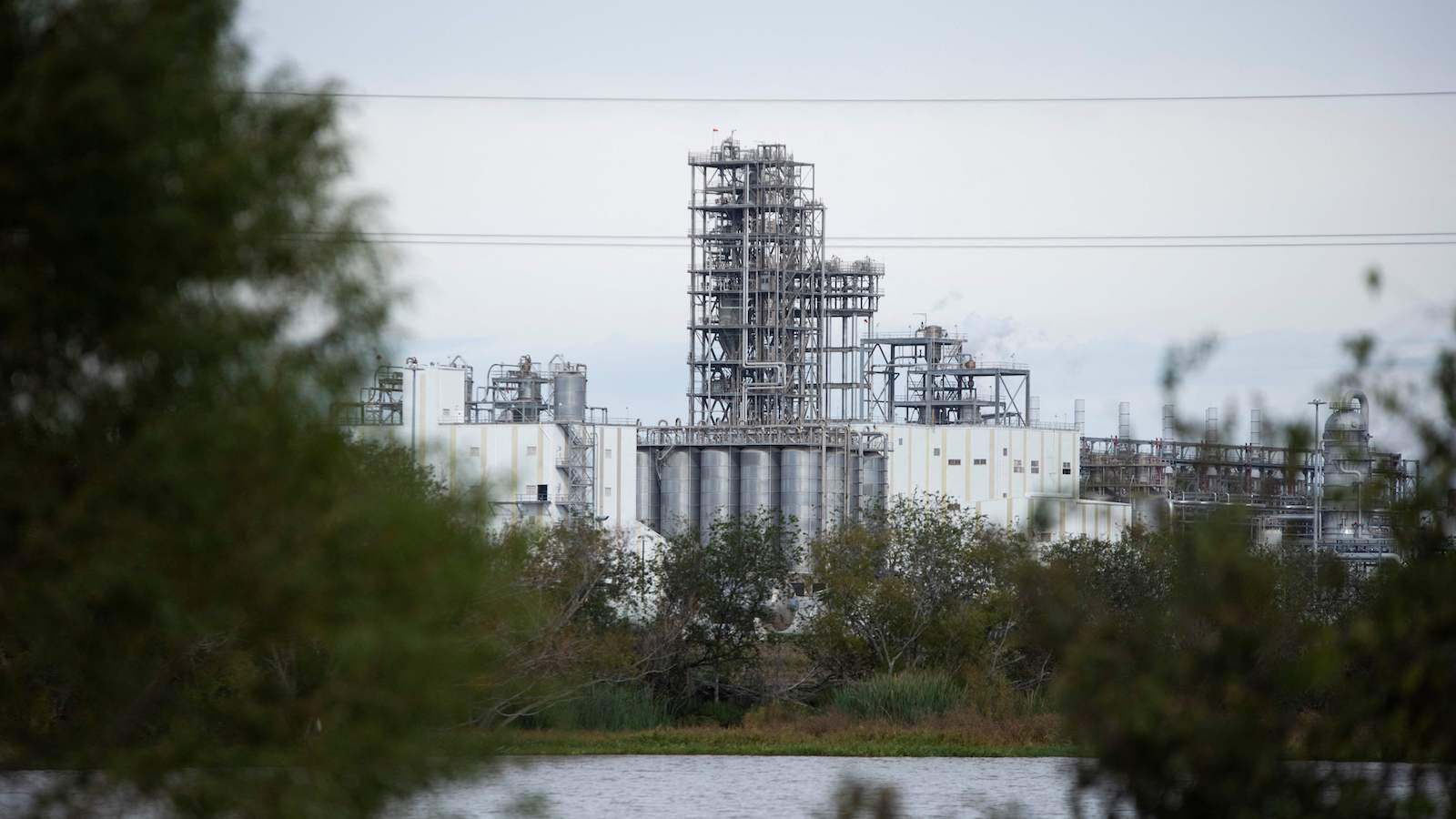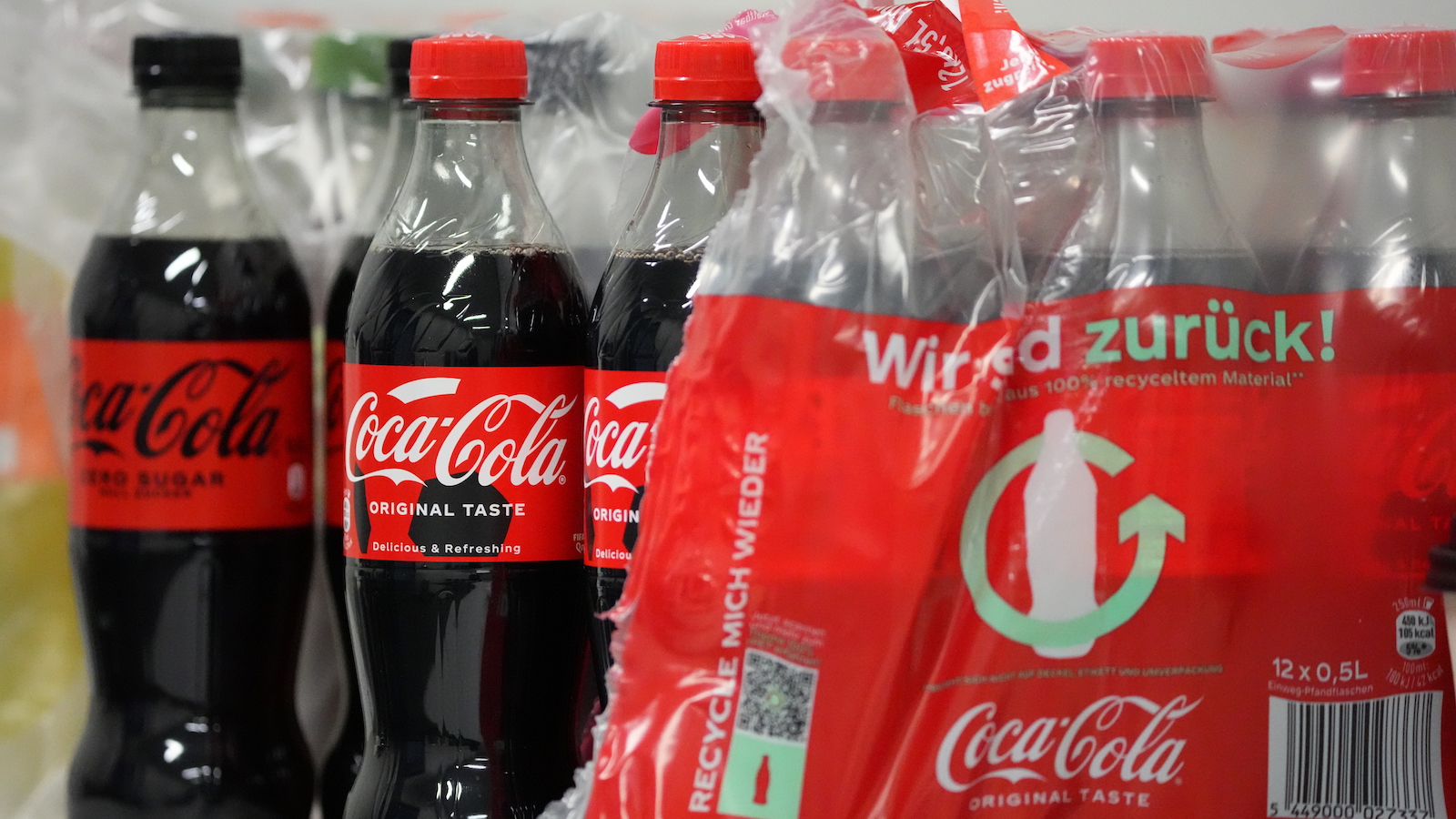In 1973, a DuPont engineer named Nathaniel Wyeth patented the PET plastic bottle — an innovative and durable alternative to glass. Since then, production has skyrocketed to more than half a trillion bottles per year, driven by beverage companies like Coca-Cola, PepsiCo, and Nestlé.
It’s no secret that most of these PET bottles, named for the polyethylene terephthalate plastic they’re made of, are never recycled. Many end up on beaches or in waterways, where they degrade into unsightly plastic shards and fragments that threaten marine life. But blighted beaches are only the tip of the iceberg. According to a new report co-published by the nonprofit Defend Our Health and Bloomberg Philanthropies’ Beyond Petrochemicals campaign, PET plastic bottles cause hazardous chemical pollution at every stage of their life cycle.
“Plastics have a terrible health burden on the population,” said Mike Belliveau, Defend Our Health’s executive director. He urged the Environmental Protection Agency, or EPA, to place more stringent limits on the use of toxic chemicals, and called on beverage companies like Coca-Cola — named the number one plastic polluter for five years running by the Break Free From Plastic coalition — to replace at least half of their plastic bottles with reusable and refillable container systems by 2030.
“The beverage industry has to be responsible and held accountable for the supply chain impacts of their plastics,” Belliveau said.
The report begins at the end of the plastic life cycle, with littered PET plastic bottles that release cancer-causing pollutants and heavy metals into the environment. Although industry trade groups like to advertise PET as “100 percent recyclable,” the reality is that 70 percent of bottles are never collected for recycling. Instead, they’re dumped, sent to landfills, or incinerated, causing air pollution that disproportionately affects low-income communities and communities of color. Of the remaining 30 percent, Defend Our Health estimates that only one-third are turned into new bottles; the rest are either wasted during the recycling process or “downcycled” into lower-quality plastic products like carpeting.
With global plastic waste generation expected to triple by 2060, experts say recycling infrastructure is unlikely to keep pace. Recent research also shows the recycling process may unintentionally incorporate toxic chemicals into recycled toys, kitchen utensils, and other products, potentially putting consumers at risk.
Chemical releases also occur further up the PET bottle supply chain, when bottles are sitting on the shelf. Independent testing suggests that virtually all plastic bottles leach chemicals into the beverages they hold. These chemicals include antimony from antimony trioxide, a cancer-causing catalyst used to speed up the production of PET plastic. A 2022 analysis from Defend Our Health found antimony in Diet Coke, Honest Tea, Dasani, and other Coca-Cola products at concentrations exceeding California’s safe drinking water standard.
In response to Grist’s request for comment, Coca-Cola said all of its products are safe and have been approved by regulators everywhere it operates. “Consumers can be assured that our products are safe and of high quality,” a spokesperson said.
The rest of the report focuses on feedstocks, the chemical building blocks of PET. The production of monoethylene glycol, for example — one of PET’s main ingredients— causes some 68,000 pounds of the carcinogen ethylene oxide to be released into the air annually, and is the country’s leading source of pollution from 1,4-dioxane, a probable carcinogen. Processing and refining oil and gas to make other plastic feedstocks — chemicals like ethylene and para-xylene — can emit particulate matter, smog-producing volatile organic compounds, and aromatic hydrocarbons. The extraction of that oil and gas itself causes the release of more than 1,000 chemicals, some of which may have health unrecognized health impacts.

“We’re just barreling forward with a lot of these chemicals without understanding the implications for human health,” said Roopa Krithivasan, Defend Our Health’s director of research and a coauthor of the report. She said the burden of chemical pollution falls most heavily on marginalized communities, including poor people and people of color who live near fossil fuel extraction sites, plants that produce PET or its chemical components, and waste incinerators. According to Defend Our Health, people of color make up nearly two-thirds of those facing serious cancer risk from living within six miles of ethylene oxide emissions from a petrochemical plant.
“Our future is in the crosshairs,” Yvette Arellano, executive director of the Houston-based environmental justice organization Fenceline Watch, told reporters on Monday at a press conference for the report. “As a woman of color in the extreme-right Southern states captured by oil interests, we’re disenfranchised and disproportionately affected. Many including myself are diagnosed with infertility, babies are affected in the womb even before their first breath, and even after can potentially be diagnosed with developmental issues, neurological issues, immune issues.”
Belliveau said the EPA has done a good job identifying these disparities, but a “terrible” job correcting them. In general, he said the agency should do more to regulate plastic-related chemicals — like by adopting a federal limit for 1,4-dioxane in drinking water, enacting stricter standards for ethylene oxide pollution, and setting rigorous pollution standards for other plastic-related chemicals. Companies could help, too, by voluntarily replacing hazardous chemical additives with safer alternatives.
The EPA did not respond to Grist’s request for comment in time for publication.
More broadly, however, Belliveau wants to see fewer plastic bottles being produced in the first place. States like California are beginning to nudge companies in this direction by requiring some single-use plastics to be eliminated and replaced with reusable systems — like soda fountains and bottle refill stations — but green groups say the private sector has to step up as well. Defend Our Health wants soda makers like Coca-Cola to sell at least half of their beverages in reusable or refillable packaging by 2030 — a target twice as ambitious as Coca-Cola’s current goal.
In fact, Coke appears to be backsliding on its reuse commitment: In its latest sustainability report, the company said refillable packaging accounted for only 14 percent of the products it sold in 2022, down from 16 percent the year before. Based on Coca-Cola’s reported sales volume, the nonprofit Oceana estimates that the decrease means that the company generated 5.8 billion additional single-use bottles over the past two years, in place of reusable packaging.
Coca-Cola “has a history of not meeting its promises,” Matt Littlejohn, Oceana’s senior vice president of strategic initiatives, told Grist. He said the Defend Our Health report, which Oceana was not involved in, highlights how important it is for Coca-Cola to fulfill and exceed its existing targets — “not only for the ocean’s health, but for all of our health as well.”
Coca-Cola did not respond to Grist’s request for comment about its reuse targets.
*Correction: This article has been updated to clarify that the report was co-published by Defend Our Health and the Beyond Petrochemicals campaign.



